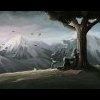A new museum at Wat Bovoranives Vihara pays tribute to its six abbots
-
Recently Browsing 0 members
- No registered users viewing this page.
-
Topics
-
-
Popular Contributors
-
-
Latest posts...
-
10
Community DSI Probes Illegal ‘VIP Runway’ Built Over Public Land in Nakhon Ratchasima
Smack in the middle....get the tractors rolling. -
6,786
-
261
SIDS - Sudden Infant Death Syndrome - Is Caused By Vaccines
Polio Is Caused by a Virus — Proven and Isolated Polio is caused by the poliovirus, a well-documented enterovirus first isolated in 1909 by Karl Landsteiner and Erwin Popper. It has been visualized under an electron microscope. It can be cultured in labs, reproduced in animals, and used to test vaccines (Salk and Sabin). Lab fact: The virus infects motor neurons in the spinal cord → causing muscle weakness or paralysis. Vaccines Eradicated Polio in Many Countries If polio were caused by toxins like pesticides (as some conspiracies claim), vaccines wouldn’t stop it—but they have: U.S.: polio eliminated by 1979 Europe: eliminated in 2002 India: declared polio-free in 2014 Example: Vaccination → drop to near-zero cases, despite no change in toxin use = strong evidence it’s viral. Polio Occurs in Specific Patterns That Don’t Match “Toxins” Polio outbreaks are infectious: Spread through fecal-oral route (contaminated water, poor hygiene) Clusters in populations with low vaccine coverage Often begins with mild symptoms (fever, nausea), like other viral infections If toxins caused polio, it wouldn’t spread person-to-person or follow epidemic curves. Toxicity Theory Is Rooted in a Misunderstanding of Correlation Some early outbreaks coincided with the use of DDT and arsenicals → conspiracy theorists blamed these. But correlation is not causation: Polio predates pesticides by decades (19th century outbreaks are well documented). In toxin-only exposure zones, no polio occurred unless the virus was present. -
10
Community DSI Probes Illegal ‘VIP Runway’ Built Over Public Land in Nakhon Ratchasima
https://maps.app.goo.gl/9KzZtEbT86433L528 https://maps.app.goo.gl/xHGT51x6gsMoBYt56- 1
-

-
31
Trump just made an idiot move
Then clearly you have missed the latest from Tulsi Gabbards regarding Obama and the whole Russia hoax, which proves my point. I am not worried about trump & the Epstein crap, if there was anything to get Trump with it would have been used years ago, before resorting to assassination. My comments are about the blatant hypocrisy and complete 180 flip flops that comes from the anti Trumper camp here on practically a daily basis, without any acknowledgment whatsoever because .... Orange man bad.. Trump (and covid) are perfect example of how easily manipulated some people are. -
40
UK Chaos at Bell Hotel: Migrant Crisis Sparks Violent Protests in Epping
UNHCR are demanding this, as are many refugee and asylum NGOs. Of course since UNHCR itself provides some of the services it's criticising itself. They are housed initially in detention centres, but this has come under fire due to many children being detained in the centres, and this has led to the Thai government farming out families to refugee and asylum NGOs who no doubt use hotels to provide housing.
-
-
Popular in The Pub







.thumb.jpeg.d2d19a66404642fd9ff62d6262fd153e.jpeg)









Recommended Posts
Create an account or sign in to comment
You need to be a member in order to leave a comment
Create an account
Sign up for a new account in our community. It's easy!
Register a new accountSign in
Already have an account? Sign in here.
Sign In Now